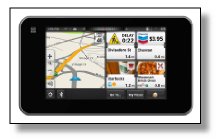Writing a business plan is both nerve-racking and exhilarating. It can be stressful to work through each section, dealing with problems and exploring alternative solutions. However, you’ll find that it’s positively thrilling to work through those problems and find out that yes, this is a doable proposition!
Most business plans have the following eight main sections; some also include an appendix. Keep in mind there is no right or wrong way to develop a business plan and your particular type of art or craft will shape its format.
1. Executive Summary
Consider the purpose of the business and briefly state how you intend to achieve that purpose. The objective here is to be direct and to-the-point. You’ll follow up on these basics in other sections of the plan.
2. Basic Company Info
List the contact information for your business here: name, address, and phone and fax number, how long you have been in business, hours of operation — you get the idea. Remember, the business plan is a work in process. Get the fundamental company facts down on paper now and you’ll find that updating the business plan in the future will be a snap.
3. Products or Services Offered
For example, let’s say you do leatherwork and create purses using authentic antique techniques such as Venetian lacquer. This section should contain a detailed description of the historical origins of your designs and the types of leather, components, and techniques you use. The Plan of Operations section will further elaborate whether you cut, dye and stitch the leather yourself, outsource the procedure, or hire employees to do it in-house.
4. Facts About Your Industry, Competition and Market
Using the prior example, discuss the leatherwork industry, particularly the historical replication niche in which you plan to place yourself. Address your competition and your customers, especially how you plan to beat the competition.
5. Management, Organization and Ownership
If this business is your baby and you’re handling all management aspects yourself, this section is brief. If you have a more elaborate setup, prepare a flowchart showing managers, the employees reporting to each manager and their job description. Ownership refers to choice of business entity and is one of the first decisions you need to make when starting a new business.
6. Marketing Plan
This is very important – how are you going to get your name out to your potential customers? If you’ve done your research, you should already have some basic ideas. Jot down bullet points and flesh out exactly how you plan to market your business.
7. Plan of Operations
This is your A to Z on how you plan to run your business. I find that it’s helpful to think about what you feel makes up a typical day in the life of an arts and crafts business owner. This section covers everything from researching and maintaining a potential customer contact list to deciding how you will manage your inventory.
8. Financial Projections
Until you have some sort of sales track record or signed contracts from customers, projecting gross receipts is guesswork at best. That’s why it’s crucial to take the prior sections of the business plan seriously. You use all the research and knowledge you gain by working through the business plan and calculate the unknowns in your financial statements with an educated guess.
9. Optional – The Appendix
My business plan also includes an appendix. This section contains all the legal and operational facts about my business such as my federal identification number, my bank account and credit card information, business license and sales tax certificate. It seems like I have to reference that type of information frequently so it’s handy to have it all in one place.





